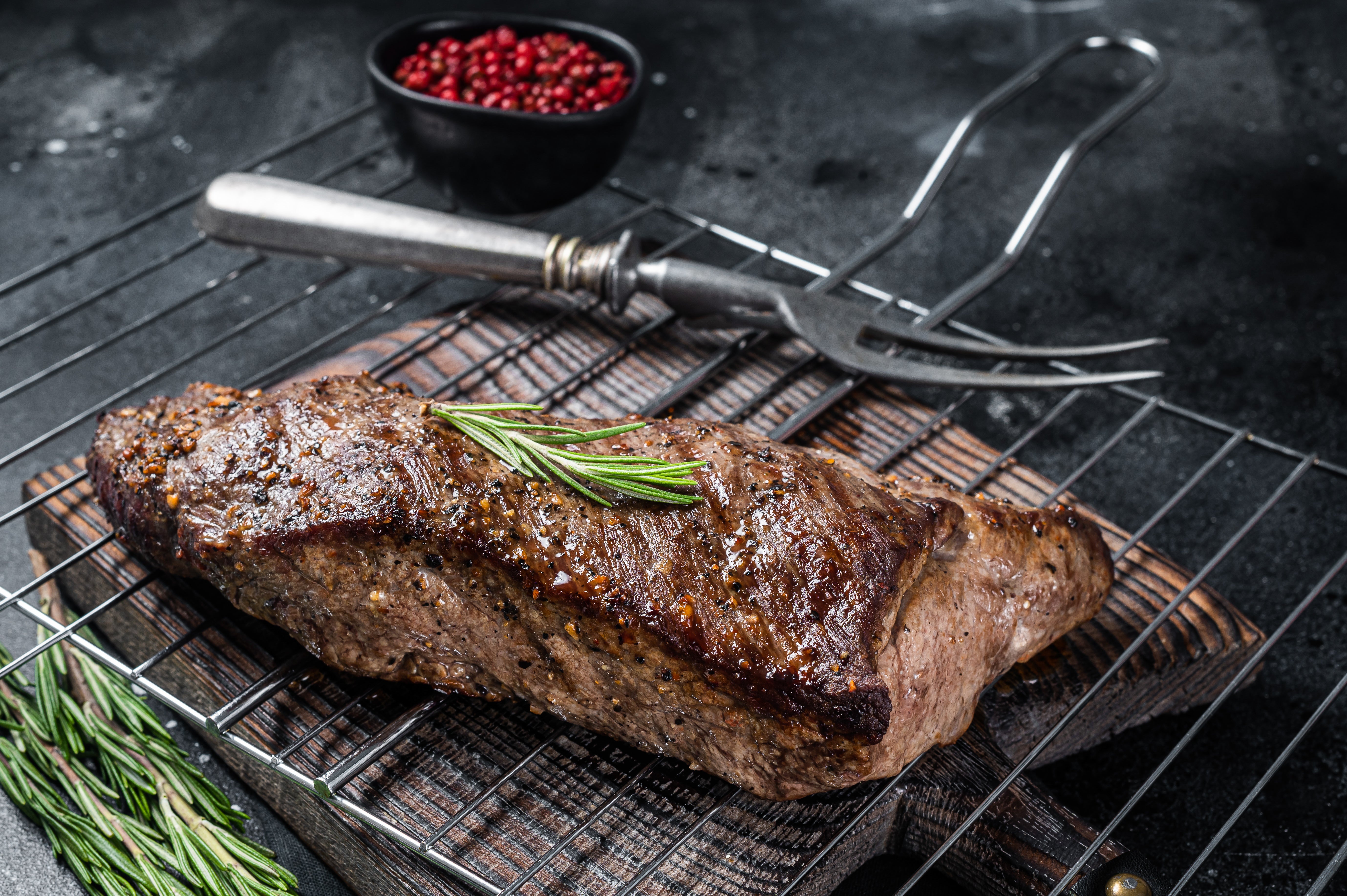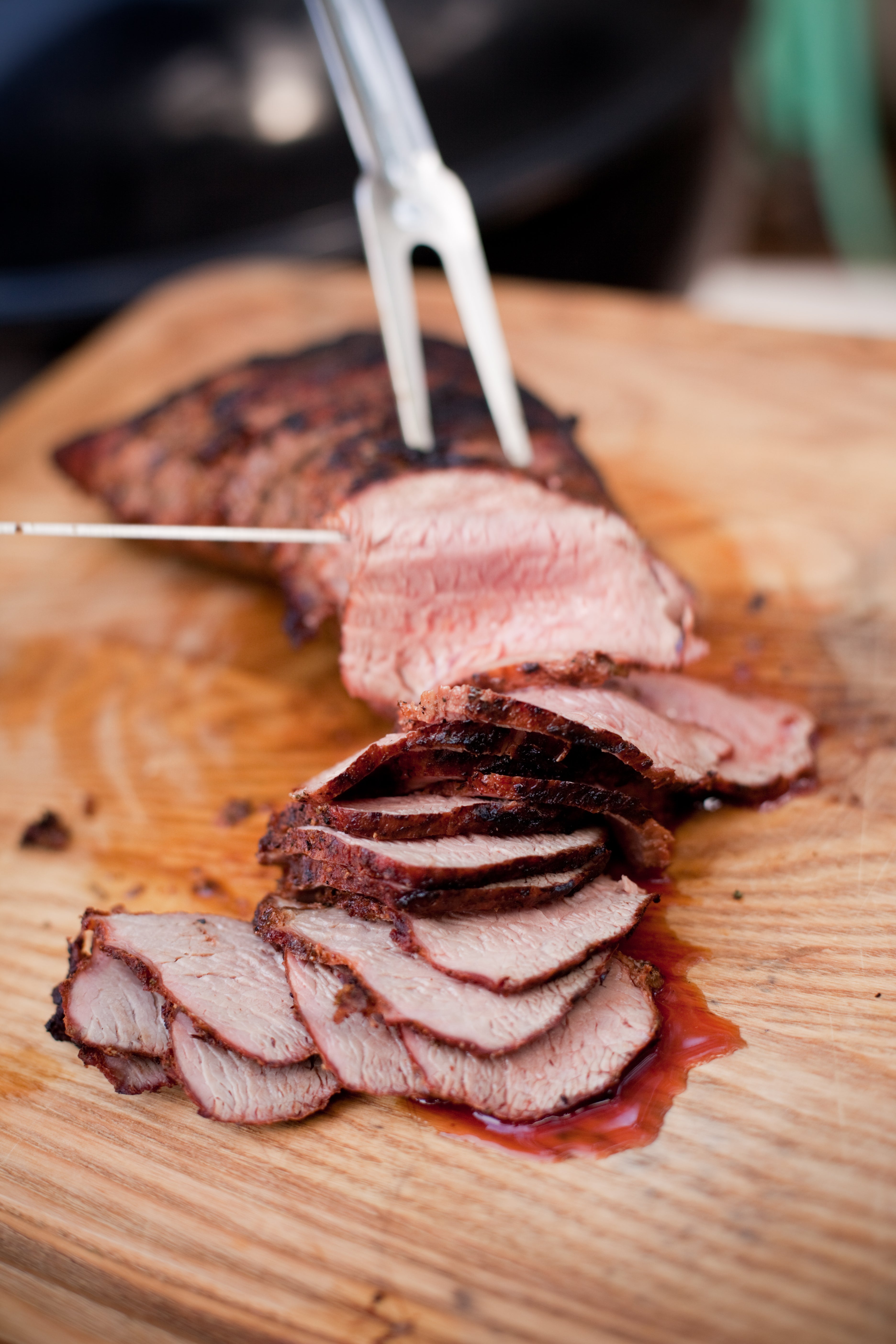You’ve been cooking steak all wrong – try reverse-searing
Reverse-searing takes the guesswork out of grilling steak, rewarding you with a juicy, perfectly cooked slab of beef every time, writes Steven Raichlen

Your support helps us to tell the story
From reproductive rights to climate change to Big Tech, The Independent is on the ground when the story is developing. Whether it's investigating the financials of Elon Musk's pro-Trump PAC or producing our latest documentary, 'The A Word', which shines a light on the American women fighting for reproductive rights, we know how important it is to parse out the facts from the messaging.
At such a critical moment in US history, we need reporters on the ground. Your donation allows us to keep sending journalists to speak to both sides of the story.
The Independent is trusted by Americans across the entire political spectrum. And unlike many other quality news outlets, we choose not to lock Americans out of our reporting and analysis with paywalls. We believe quality journalism should be available to everyone, paid for by those who can afford it.
Your support makes all the difference.The quest to cook the perfect steak has been a challenge since slabs of meat were roasted over fire. But what constitutes a great steak?
It should take you through a complex strata of textures and flavours: dark crust, rosy meat, tenderness balanced by chew. You want a steak you can sink your teeth into. There should be a perfect ratio of meat to fat – and there should be blood. Without those luscious steak juices, a steak would be merely delicatessen roast beef.
Tri-tip delivers all of that. A cut popularised on the west coast of the US, and the surrounding area, this crescent-shaped steak from the bottom of the sirloin slices like brisket and eats like steak, with a rich, beefy flavour. But like all thick cuts, it poses a challenge: grill it directly over high heat as you would a strip or skirt steak and you risk burning the exterior while leaving the centre undercooked. Cook it low and slow, as you would brisket, and you lose the caramelised crust.
Enter reverse-searing – an ingenious grilling method that combines the low and slow smoking of traditional barbecue with the high heat charring practiced at steakhouses. It takes the guesswork out of grilling steak, rewarding you with a juicy, perfectly cooked slab of beef every time.
With this simple two-step process, you first cook the steak slowly – for 30 minutes or so – at 120C, the temperature used by pitmasters to barbecue brisket. Once you’ve warmed the centre of the meat to 43C, you rest the steak on a platter and raise the grill’s heat to a searing temperature of 315C. You then char the exterior of the steak directly over the fire until sizzling, crusty and dark brown, bringing the meat’s internal temperature to 51C (for rare) or 57C (for medium-rare).
Reverse-searing offers several advantages over traditional direct grilling over high heat, in which steak goes from undercooked to overcooked in a minute or two, requiring precise timing that inexperienced grillers may find daunting. During the initial stage of reverse-searing, the internal temperature of the meat rises gradually, so it’s easier to monitor and achieve the doneness you desire. Also, the meat cooks more evenly this way, ending up with uniform colour and doneness from top to bottom, not a gray-brown ring of meat just beneath the crust and a reddish-blue bull’s-eye in the centre.
Because the meat rests between the two stages, which allows it to relax and become juicier, the steak can be served hot off the grill right after its final sear. That means no more lukewarm steak and not having to keep hungry people waiting.
Perhaps the biggest advantage to reverse-searing is the ability to smoke the steak by adding hardwood chunks or chips to your low fire. That step infuses thick cuts like tri-tip with the haunting flavour of barbecue and adds a spectacular dimension of flavour.
The resulting tri-tip steak is perfectly cooked and intensely flavourful – and the cut, also known as Newport, Santa Maria, triangle and bottom sirloin tip, is mercifully inexpensive. Food prices are rising, and reverse-searing works great for other inexpensive thick cuts, such as top round, sirloin or picanha (it can be applied to three-finger-thick porterhouses and tomahawks, too).
If you’re going to splurge on steak, you certainly want to nail it. Reverse-searing is as close to foolproof as grilling a steak gets.
Reverse-seared steak

Reverse-searing is a grilling technique for steak that ensures a dark, sizzling crust and a rosy centre that is perfectly cooked to your desired degree of doneness. This brilliant grilling method combines the low and slow cooking of traditional barbecue with the high heat charring practiced at steakhouses. Though it works well with any thick steak, from picanha to porterhouse, this recipe calls tri-tip. As the name suggests, it’s a triangular or boomerang-shaped steak cut from the tip of the sirloin, blessed with a robust beefy flavour.
Total time: 45 to 55 minutes, plus lighting the grill
Serves: 4
Ingredients:
1 large or 2 small wood chunks (such as oak, hickory or mesquite) or 190g wood chips
Canola oil, for greasing the grill grate
1 tri-tip steak (about 900g; see tip below)
Coarse or sea salt
Freshly ground black pepper
Granulated onion or garlic (or both)
Method:
1. If using wood chips, soak in water for 30 minutes. Set up your grill for indirect grilling and heat to 120C. Clean and oil the grill grate.
2. Remove the tri-tip from the refrigerator. Generously season it with salt, pepper and granulated onion or garlic (or both) on all sides.
3. Place the tri-tip, fat side up, on the grill grate away from the heat. Insert a remote thermometer probe, if using, deep into the centre of the meat. If you soaked wood chips, drain them. If using a charcoal grill, add the wood chunk(s) or chips to the coals. If using a gas grill, place the wood chunks under the grate over one of the burners, or place the chips in your grill’s smoker box. Close the lid. Indirect grill the tri-tip to obtain an internal temperature of 43 degrees, which will take 30 minutes or so. Transfer the tri-tip to a platter and let it rest for at least 10 minutes, or as long as 1 hour.
4. Just before serving, heat your grill to high. On a charcoal grill, rake the coals into a mound in the centre of the grill, adding fresh coals as needed. Let the new coals burn until glowing red. On a gas grill, simply set the burners on high.
5. Return the tri-tip to the grate directly over the heat, fat side up, and reinsert the thermometer probe, if using. Direct grill until the top and bottom are sizzling, crusty and dark, and the internal temperature is 51 degrees for rare or 57 degrees for medium-rare, 3 to 6 minutes per side, turning with tongs.
6. Transfer the tri-tip to a cutting board and thinly slice across the grain (you do not need to rest the meat a second time). Take time to notice the even colour and doneness of the meat and to appreciate the intoxicating aroma of the wood smoke. Serve at once, while the steak is still hot.
Tips: Tri-tip, the triangular or boomerang-shaped steak cut from the tip of the sirloin, is also sold as Newport, Santa Maria, triangle and bottom sirloin tip. This technique also works with any thick steak, such as top round, sirloin or picanha or three-finger-thick porterhouses and tomahawks.
How to set up your grill for reverse searing
Reverse-searing can be done on a charcoal or gas grill, but it’s easier to smoke with charcoal. The method requires little more in the way of special equipment than a grill with a lid and an accurate meat thermometer.
Ideally, you’ll use a wired remote thermometer, or a wireless meat probe. You can also use an instant-read meat thermometer, but you’ll need to open the grill several times to get a reading, which can cause the internal temperature of the grill to drop.
To give the meat a smoky flavour, you’ll need hardwood chunks or chips. Oak, hickory or mesquite go great with beef. If using chips, cover them with water and soak for 30 minutes, which slows their combustion when heated. Drain the chips well before adding them to the fire. There is no need to soak wood chunks.
When reverse-searing, you start with your grill set up for indirect grilling, that is, with the heat source away from where the food will cook.
On a charcoal grill, rake hot coals into two mounds on opposite sides of the grill and leave the centre empty for the meat. On a two-burner gas grill, light one side and cook the steak away from the heat on the other side. On larger gas grills, light the outside or front and rear burners, keeping the centre free for the steak.
After indirect grilling, and just before serving, set up your grill for cooking directly over high heat. On a charcoal grill, rake the coals into a mound in the centre of the grill, adding fresh coals as needed. Let the new coals burn until glowing red. On a gas grill, simply set the burners on high.
©The New York Times
Join our commenting forum
Join thought-provoking conversations, follow other Independent readers and see their replies
Comments